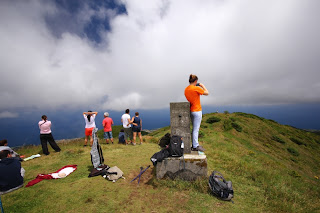SPEA continues to organize activities in the SPA Pico da Vara / Ribeira do Guilherme, through the program Biology in the Summer. These free activities provide an opportunity for the participants to know some of the priority habitats of the Azores, as well as its flora and fauna and the actions taken by LIFE projects coordinated by SPEA and partners to conserve these areas and species, such as the Priolo.
This weekend there were two activities. On Saturday, July 27, it took place a visit to the conservation actions undertaken during the LIFE Sustainable Laurel Forest project in the activity "Meet a conservation project", with 9 participants. In an enjoyable atmosphere, everyone got to know the intervened areas in the Graminhais Plateau, an area of peatland, and Serra da Tronqueira, where you can observe the Laurel forest. We also observed some priolos in the end of this activity, presenting the participants with their presence.
Given the large amount of requests, there was a walk on Sunday to Pico da Vara, one of the most popular hiking trails on the island of São Miguel and that provides natural landscape of great beauty. Altogether there were 8 people that walked throught the trail of Graminhais - Pico da Vara - Graminhais, with a shy sunny day but with pleasant temperature. This trail crosses the plateau area of Graminhais intervened by the LIFE Sustainable Laurel Forest Project to restore peatlands found there. Nowadays it is possible to make part of this route, about 1.5 km, in a requalified trail for the protection of rare species of moss that can be observed in this area, as well as the convenience of walkers.
In August there are several proposals of activities for everyone, keep an eye out and participate in these activities, learn a little more about the Azores and its biodiversity during your vacation.
SPEA thanks all participants and invites them to participate in new activities.





























.JPG)






















